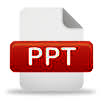

CLC number: R541.7+5
On-line Access: 2024-08-27
Received: 2023-10-17
Revision Accepted: 2024-05-08
Crosschecked: 2017-10-12
Cited: 0
Clicked: 6519
Citations: Bibtex RefMan EndNote GB/T7714
Jun Zhu, Rong-jun Gao, Qiang Liu, Ru-hong Jiang, Lu Yu, Ya-xun Sun, Pei Zhang, Jian-wei Lin, Yang Ye, Zu-wen Zhang, Shi-quan Chen, Hui Cheng, Xia Sheng, Chen-yang Jiang. Metabolic benefits of rivaroxaban in non-valvular atrial fibrillation patients after radiofrequency catheter ablation[J]. Journal of Zhejiang University Science B,in press.Frontiers of Information Technology & Electronic Engineering,in press.https://doi.org/10.1631/jzus.B1600492 @article{title="Metabolic benefits of rivaroxaban in non-valvular atrial fibrillation patients after radiofrequency catheter ablation", %0 Journal Article TY - JOUR
利伐沙班在非瓣膜病性房颤患者经导管射频消融术后抗凝中的代谢获益创新点:首次研究利伐沙班对房颤射频消融术后患者代谢水平影响,评估利伐沙班相较华法林抗凝治疗的代谢获益。 方法:前瞻性入选2014年4月至7月共60例行经皮房颤导管射频消融术患者,随机分为利伐沙班治疗组和华法林治疗组。在术后15、30、60和90天检测代谢指标(包括血清总蛋白、白蛋白、球蛋白和高密度脂蛋白(HDL)等)变化,并随访出血、卒中和系统性栓塞事件等发生情况。 结论:服用利伐沙班抗凝治疗患者在随访期间血清总蛋白、白蛋白、球蛋白和HDL水平较术前均显著升高,而华法林治疗组患者各项代谢指标呈先下降、后上升趋势。两组均没有发生死亡和栓塞事件,出血并发症发生率亦无明显差异。研究结果表明,非瓣膜病性房颤患者经导管射频消融术后接受利伐沙班抗凝具有代谢方面获益,与华法林相比两者在安全性和有效性方面无明显差异,研究结果可为临床选择合适抗凝方案提供参考。 关键词组: Darkslateblue:Affiliate; Royal Blue:Author; Turquoise:Article
Reference[1]Ansell, J., Hirsh, J., Hylek, E., et al., 2008. Pharmacology and management of the vitamin K antagonists: American College of Chest Physicians evidence-based clinical practice guidelines (8th edition). Chest, 133(6 Suppl.):160S-198S.  [2]Camm, A.J., Amarenco, P., Haas, S., et al., 2016. XANTUS: a real-world, prospective, observational study of patients treated with rivaroxaban for stroke prevention in atrial fibrillation. Eur. Heart J., 37(14):1145-1153.  [3]Cappato, R., Calkins, H., Chen, S.A., et al., 2010. Updated worldwide survey on the methods, efficacy, and safety of catheter ablation for human atrial fibrillation. Circ. Arrhythm. Electrophysiol., 3(1):32-38.  [4]Caso, G., Feiner, J., Mileva, I., et al., 2007. Response of albumin synthesis to oral nutrients in young and elderly subjects. Am. J. Clin. Nutr., 85(2):446-451.  [5]Cheng, H., Dai, Y.Y., Jiang, R.H., et al., 2014. Non-pulmonary vein foci induced before and after pulmonary vein isolation in patients undergoing ablation therapy for paroxysmal atrial fibrillation: incidence and clinical outcome. J. Zhejiang Univ.-Sci. B (Biomed. & Biotechnol.), 15(10):915-922.  [6]Dillier, R., Ammar, S., Hessling, G., et al., 2014. Safety of continuous periprocedural rivaroxaban for patients undergoing left atrial catheter ablation procedures. Circ. Arrhythm. Electrophysiol., 7(4):576-582.  [7]Doweiko, J.P., Nompleggi, D.J., 1991. Role of albumin in human physiology and pathophysiology. J. Parenter. Enteral Nutr., 15(2):207-211.  [8]Duly, E.B., Grimason, S., Grimason, P., et al., 2003. Measurement of serum albumin by capillary zone electrophoresis, bromocresol green, bromocresol purple, and immunoassay methods. J. Clin. Pathol., 56(10):780-781.  [9]Eitel, C., Koch, J., Sommer, P., et al., 2013. Novel oral anticoagulants in a real-world cohort of patients undergoing catheter ablation of atrial fibrillation. Europace, 15(11):1587-1593.  [10]Fox, K.A., Piccini, J.P., Wojdyla, D., et al., 2011. Prevention of stroke and systemic embolism with rivaroxaban compared with warfarin in patients with non-valvular atrial fibrillation and moderate renal impairment. Eur. Heart J., 32(19):2387-2394.  [11]Francart, S.J., Hawes, E.M., Deal, A.M., et al., 2014. Performance of coagulation tests in patients on therapeutic doses of rivaroxaban. A cross-sectional pharmacodynamic study based on peak and trough plasma levels. Thromb. Haemost., 111(6):1133-1140.  [12]Gaita, F., Caponi, D., Pianelli, M., et al., 2010. Radiofrequency catheter ablation of atrial fibrillation: a cause of silent thromboembolism? Magnetic resonance imaging assessment of cerebral thromboembolism in patients undergoing ablation of atrial fibrillation. Circulation, 122(17):1667-1673.  [13]Heidbuchel, H., Verhamme, P., Alings, M., et al., 2013. European Heart Rhythm Association Practical Guide on the use of new oral anticoagulants in patients with non-valvular atrial fibrillation. Europace, 15(5):625-651.  [14]Hussein, A.A., Martin, D.O., Saliba, W., et al., 2009. Radiofrequency ablation of atrial fibrillation under therapeutic international normalized ratio: a safe and efficacious periprocedural anticoagulation strategy. Heart Rhythm, 6(10):1425-1429.  [15]Jackson, A.A., Phillips, G., McClelland, I., et al., 2001. Synthesis of hepatic secretory proteins in normal adults consuming a diet marginally adequate in protein. Am. J. Physiol. Gastrointest. Liver Physiol., 281(5):G1179-G1187.  [16]January, C.T., Wann, L.S., Alpert, J.S., et al., 2014. 2014 AHA/ACC/HRS guideline for the management of patients with atrial fibrillation: executive summary: a report of the American College of Cardiology/American Heart Association Task Force on practice guidelines and the Heart Rhythm Society. Circulation, 130(23):2071-2104.  [17]Jiang, R.H., Po, S.S., Tung, R., et al., 2014. Incidence of pulmonary vein conduction recovery in patients without clinical recurrence after ablation of paroxysmal atrial fibrillation: mechanistic implications. Heart Rhythm, 11(6):969-976.  [18]Kim, J.S., Jongnarangsin, K., Latchamsetty, R., et al., 2013. The optimal range of international normalized ratio for radiofrequency catheter ablation of atrial fibrillation during therapeutic anticoagulation with warfarin. Circ. Arrhythm. Electrophysiol., 6(2):302-309.  [19]Kwak, J.J., Pak, H.N., Jang, J.K., et al., 2010. Safety and convenience of continuous warfarin strategy during the periprocedural period in patients who underwent catheter ablation of atrial fibrillation. J. Cardiovasc. Electrophysiol., 21(6):620-625.  [20]Lakkireddy, D., Reddy, Y.M., di Biase, L., et al., 2014. Feasibility and safety of uninterrupted rivaroxaban for periprocedural anticoagulation in patients undergoing radiofrequency ablation for atrial fibrillation: results from a multicenter prospective registry. J. Am. Coll. Cardiol., 63(10):982-988.  [21]Patel, M.R., Mahaffey, K.W., Garg, J., et al., 2011. Rivaroxaban versus warfarin in nonvalvular atrial fibrillation. N. Engl. J. Med., 365(10):883-891.  [22]Piccini, J.P., Stevens, S.R., Lokhnygina, Y., et al., 2013. Outcomes after cardioversion and atrial fibrillation ablation in patients treated with rivaroxaban and warfarin in the ROCKET AF trial. J. Am. Coll. Cardiol., 61(19):1998-2006.  [23]Santangeli, P., di Biase, L., Horton, R., et al., 2012. Ablation of atrial fibrillation under therapeutic warfarin reduces periprocedural complications: evidence from a meta-analysis. Circ. Arrhythm. Electrophysiol., 5(2):302-311.  [24]Takahashi, A., Kuwahara, T., Takahashi, Y., 2009. Complications in the catheter ablation of atrial fibrillation: incidence and management. Circ. J., 73(2):221-226.  [25]Thalacker-Mercer, A.E., Johnson, C.A., Yarasheski, K.E., et al., 2007. Nutrient ingestion, protein intake, and sex, but not age, affect the albumin synthesis rate in humans. J. Nutr., 137(7):1734-1740.  [26]Vazquez, S.R., Johnson, S.A., Rondina, M.T., 2010. Peri-procedural anticoagulation in patients undergoing ablation for atrial fibrillation. Thromb. Res., 126(2):e69-e77.  Journal of Zhejiang University-SCIENCE, 38 Zheda Road, Hangzhou
310027, China
Tel: +86-571-87952783; E-mail: cjzhang@zju.edu.cn Copyright © 2000 - 2025 Journal of Zhejiang University-SCIENCE | ||||||||||||||


 ORCID:
ORCID:
Open peer comments: Debate/Discuss/Question/Opinion
<1>